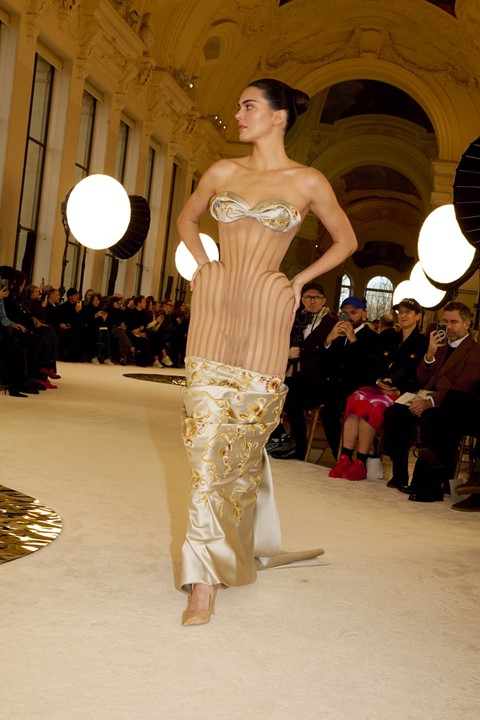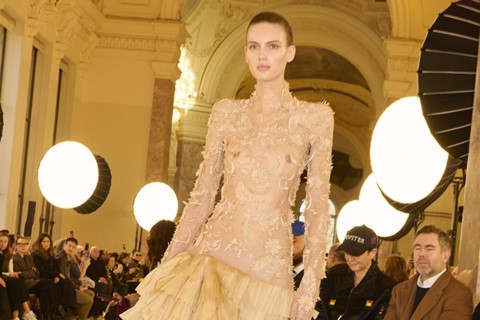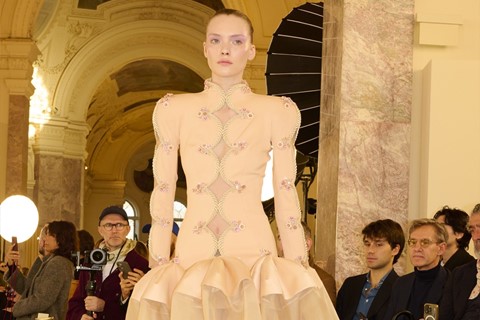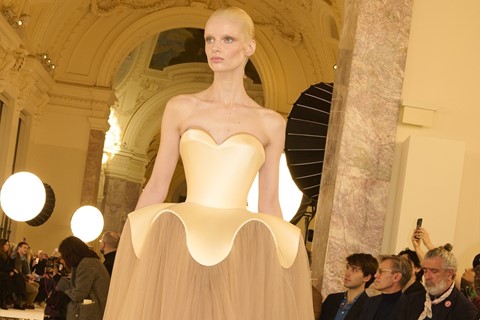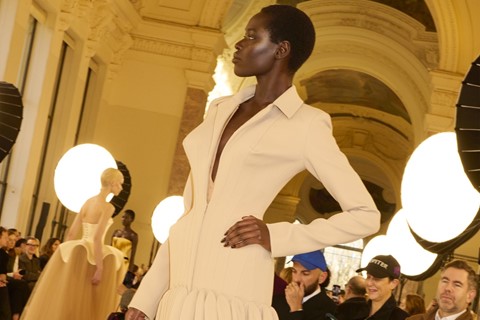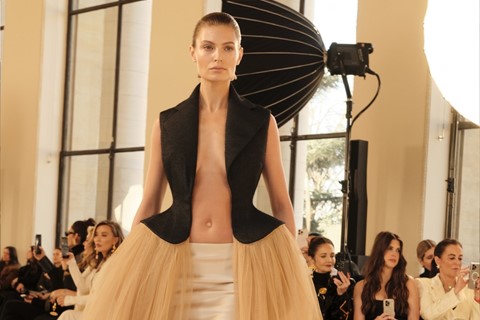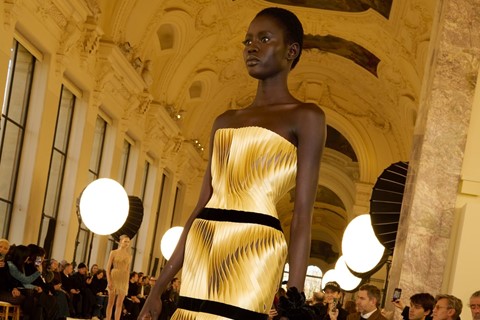Weirdly, it takes a certain kind of chutzpah to call a collection Icarus – after the overly-confident son of a craftsman who flew too close to the son on wax-coated wings and plunged to his doom in Greek mythology. Daniel Roseberry studded his Schiaparelli runway in the Petit Palais with golden pools of hammered metal – the stuff he normally makes into big flash jewellery or big brash buttons, and sells very well to clients – and sent out a gilded feather as an invite. And then he showed a collection that soared, just high enough. His wings may have got singed a bit, but he certainly didn’t plunge.
And they weren’t clipped, either. For Roseberry, the idea of Icarus wasn’t the defeat but rather the noble attempt. “Haute couture is by definition a search for perfection,” he said. “Every season can feel like a quixotic struggle a climb, to reach an ever-higher level of execution and vision. But we do it – I do it – for you.” So Roseberry pushed himself.
He did that last season – I don’t want to say he ‘started’ last season, but that show was certainly a tipping point, where Roseberry felt like he’d got mileage out of the black and gold he’s made the house’s signature, and out of surrealism and outright Elsa-homage, and decided to explore something different. This show continued his thrust towards a different aesthetic, expanding the meaning of Schiaparelli and our perception of Roseberry’s talent, as well as giving his ateliers a workout. The base of everything was the corset – which Schiap herself played with post-1947, in the final years of her Maison, when her signature look had slightly fallen out of favour and she began to kowtow to the hourglass silhouette popularised by Dior. Roseberry was doubtless triggered, in part, by last January’s Maison Margiela show – as were many others. Corsets are becoming a big thing, and Roseberry is too ardent a fan of fashion not to let that show at least influence him a whisper. But the really clever thing is that Roseberry can take that, and make it his own – his corsets were exposed, slipping out of his dresses, boned waists on show – which, credit to him, was also an idea he explored in his Autumn/Winter 2022 couture show – a dress sliced to bolero and draped skirt, the fleshy cotton innards of its guêpière laid bare. This time, though, those waists were cinched, hips and busts padded, exaggerated to Scarlet O’Hara proportions.
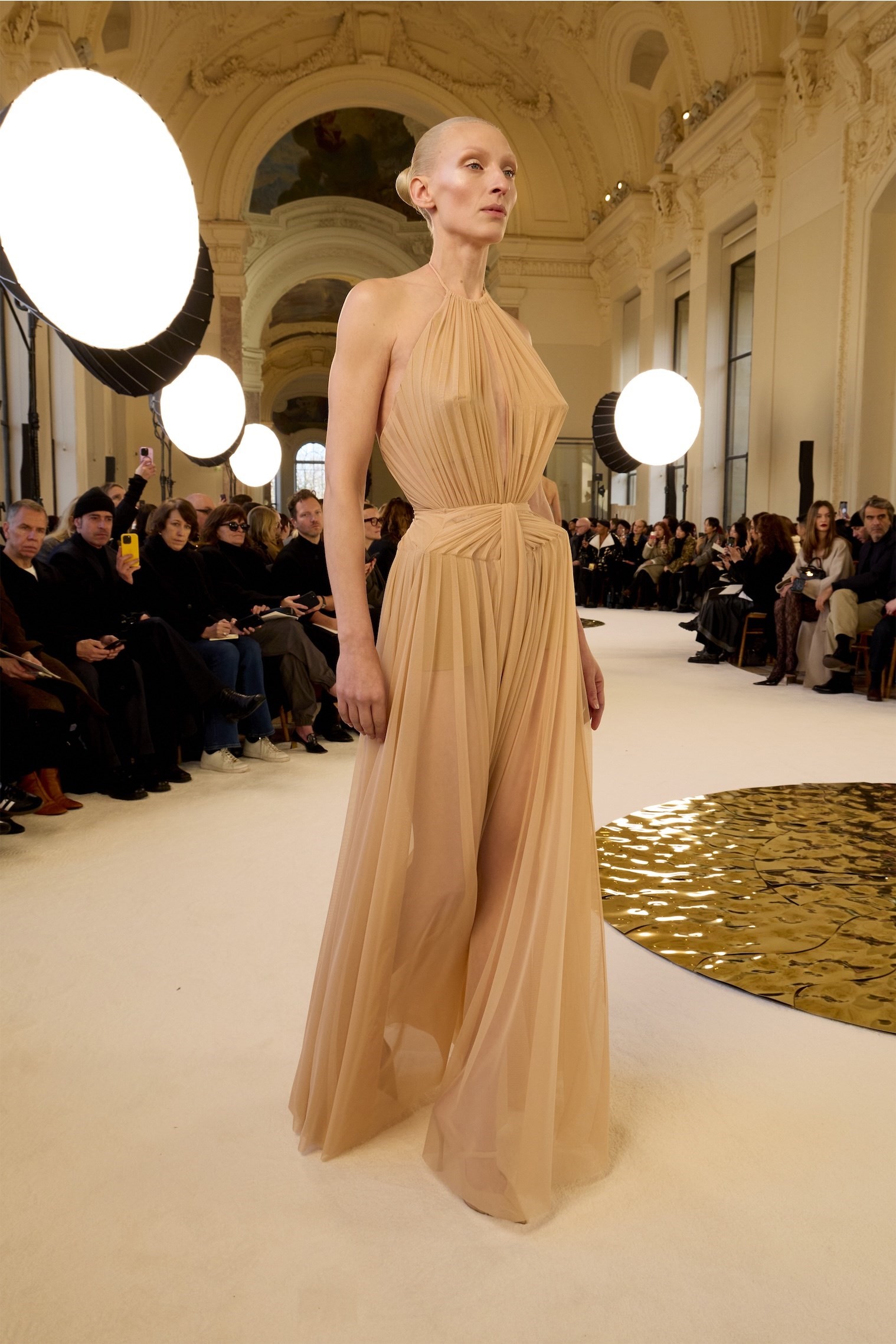
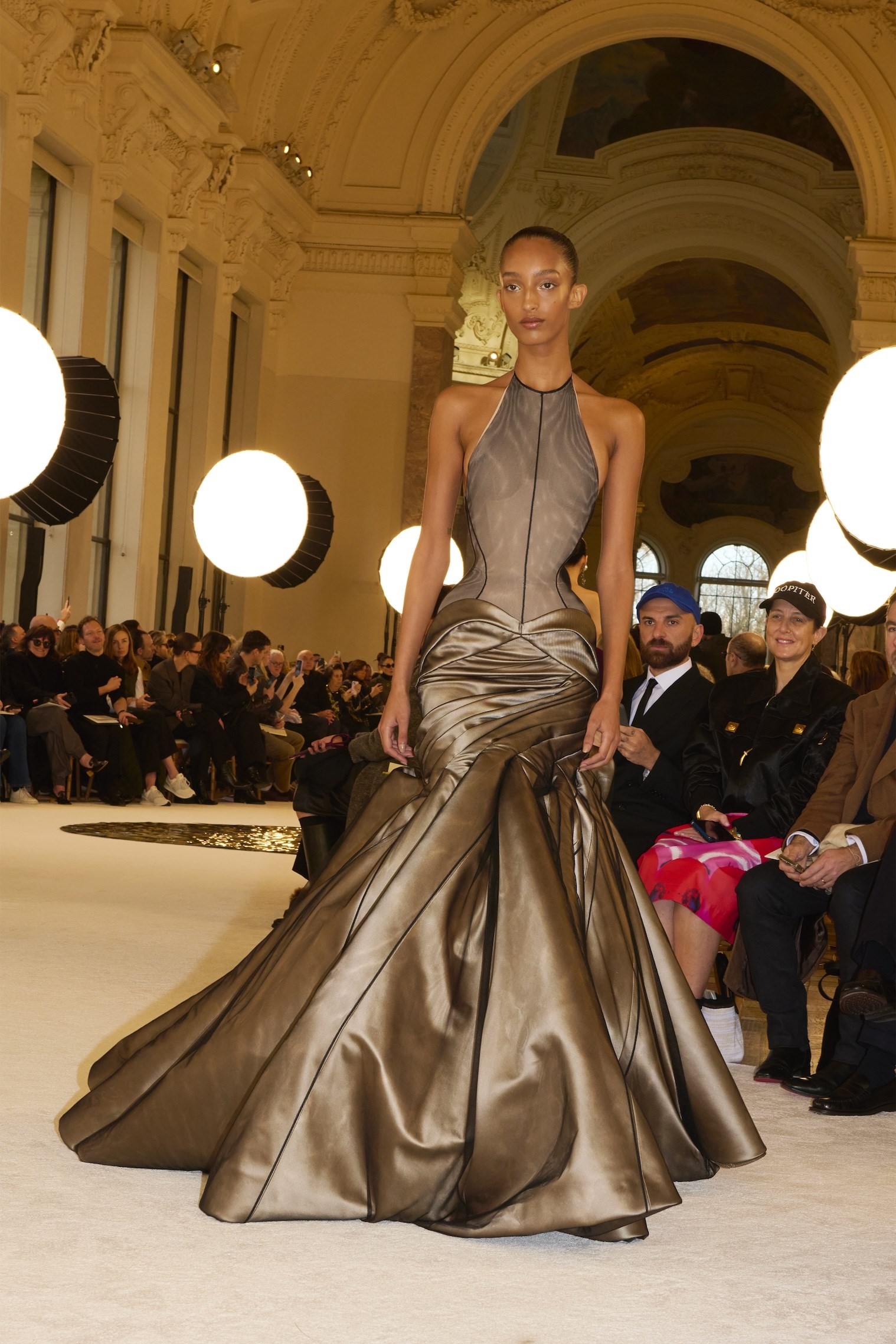
Some jackets were cut to balloon out at the hip, forming aerodynamic bustles moulded in neoprene or jersey – Roseberry called them ‘S-shaped’, to bring it right back to Schiaparelli, although they had echoes of Mugler to their sculpted shape. As well as Madame Grès, Charles Frederick Worth, Saint Laurent, Alaïa – Roseberry openly cited his litany of influences in his show notes. Which is bold, perhaps brave, but also indicates, again, both his knowledge of and passion for fashion – one of the greatest things about his work is how Roseberry can embrace and synthesise the influences of designers past – often legitimised by their own open admiration for the work of Schiaparelli – and shape them into something new. Unlike many designers, he can afford to be open with his references, given how thoroughly he transforms them. This also showed exactly how the expertise of Schiaparelli’s ateliers have expanded during Roseberry’s six-year tenure – a young couture house, only relaunched in 2013, building its knowledge base and all-important teams of craftspeople from scratch.
There’s ambition to what Roseberry does. Although Elsa shifted fashion and rapidly became one of the most influential and successful Parisian couture houses in the 1930s, Schiaparelli in the 21st century has always been small-fry next to the big guns. It’s still small, but that’s a huge part of its charm. And Roseberry knows that then, you have to shout to make yourself known. Roseberry is like Christian Lacroix at Jean Patou in the 80s – the parallels are extraordinary. For both, couture is a laboratory of ideas. And Roseberry, like Lacroix, has had a seismic impact not just on the cloistered world of haute couture, or even the wider niche of fashion, but on aesthetics and culture as a whole. This show, undoubtedly, had power to resonate again. He flew high, but his wings didn’t get burned. Which was exactly what he wanted to do.
